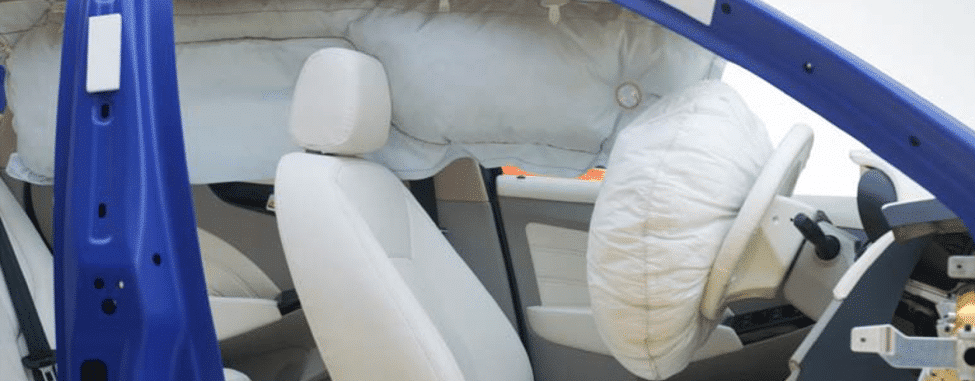
Side crash detection with structure-borne noise
Optimized solutions for intelligent occupant protection systems
Due to the small amount of survival space available, side collisions are among the most dangerous types of accidents and place particularly high demands on the occupant protection systems. Through a combination of structural adjustments and structure-borne noise measurement, optimized solutions for intelligent occupant protection systems in side crashes can be implemented. With this optimization becomes a fundamental contribution to the vision Zero, the qualitative target definition of zero traffic deaths, and on international competitiveness made by the German automotive supplier industry.
The aim of the research project CISS.S – side crash detection with structure-borne noise – under the leadership of the Technical University of Ingolstadt (THI) was to minimize the risk potential in side crashes by testing new and transferring known and already proven methods from frontal crash detection with structure-borne noise, as well as innovative solutions for to research intelligent occupant protection systems.
The content of the project was the further development of a simulation method for structure-borne noise (KS) and the transfer to cross-sectional areas such as production and medical technology. The effects of the KS formation in the critical lateral load cases could be identified and evaluated through fundamental investigations. This revealed constructive dependencies that can be optimized by means of structural adjustments in order to improve the KS excitation and propagation. The measures were tested on vehicles.
With the developed methods, an early detection of the side crash could be achieved for improved airbag deployment. In addition, the new simulation method offers the potential to efficiently estimate the propagation of structure-borne noise in complex structures for the first time in the virtual vehicle development process. This means that a significant improvement in airbag deployment and thus optimal occupant protection can be achieved. That Process has been patented.
The success of the project and the competences developed as a result made a significant contribution to the acquisition of the research building “CARISSMA – Center of Automotive Research on Integrated Safety Systems and Measurement Area” at the THI. The research and test center is designed as a leading scientific center for vehicle safety in Germany.
From research results to patents
The cooperation project CISS.S – side crash detection with structure-borne noise was funded by the Bavarian Research Foundation with around €793,000. The project builds on the research results of the Crash Impact Sound Sensing (CISS) project, which was funded by the Federal Ministry of Education and Research (BMBF) and awarded the Bavarian Innovation Prize 2008.
The Bavarian Research Alliance (BayFOR) advised the research team on applying for funding.
Subsequently, the Bavarian Patent Alliance (BayPAT) was commissioned by the THI to evaluate the patentability and marketability of the invention “Simulation of the transient bending wave propagation in the time domain using the Transient Ray Tracing Method” and, after a recommended and successful claim on behalf of the THI, has a patent with the German Patent and Trademark Office (DPMA) registered and granted.

